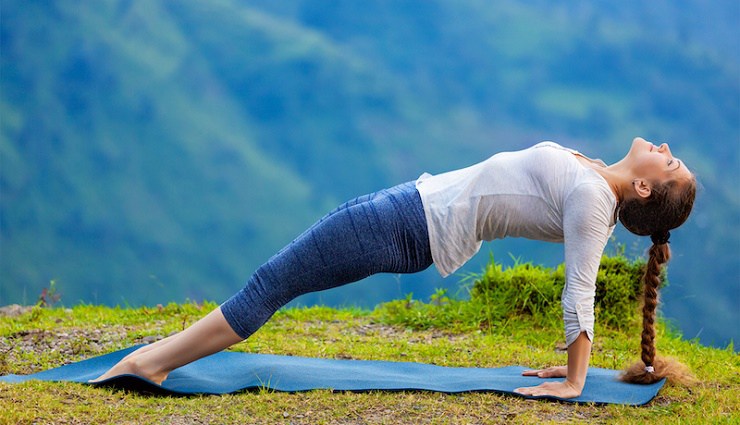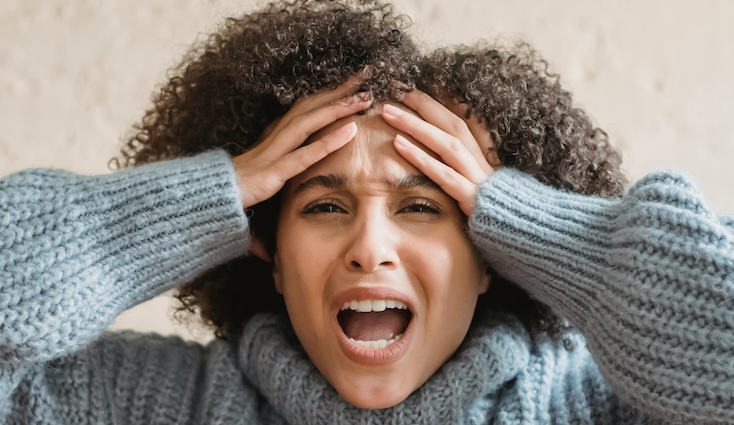Yoga started about 2000 years ago in India. At first, yoga included a series of spiritual breathing exercises, but physical activities and movements were added to it with time. Hatha yoga is a branch of yoga with many fans worldwide and is taught in many parts of the world. In the following, we will learn more about this style of yoga and its benefits. In the end, we describe the steps of performing seven traditional movements of Hatha Yoga.
What is Hatha Yoga?
Hatha yoga aims to balance the body and mind. “Ha” represents the inner sun, and “Ta” represents the moon. In Sanskrit, Hatha means “power” and is defined as “power yoga” or “a means of reaching the state of yoga through power.” Therefore, Hatha Yoga can be considered to include everything you can do with your body, including:
- Asana: Yoga postures;
- Pranayama: breathing techniques;
- Mantra: Chanting or chanting;
- Mudra: hand gestures and postures;
- Shatkriya and Shatkarma: purification techniques;
- Types of visualization.
Hatha yoga leads to the connection and unity of mind, body, and spirit through asanas, Pranayama, mudra, bandha (energy locks or seals), and shatkarma. These body-centered exercises strengthen and purify the physical body, cultivate prana (life force energy), and activate kundalini (dormant spiritual energy). Of course, modern hatha yoga does not emphasize most of these internal methods and focuses more on the physical exercises of yoga.
In general, Hatha yoga can be described as a set of voluntary and active exercises aimed at achieving harmony and balance between mind, body, and spirit. This approach in yoga includes physical postures and breathing techniques. Hatha yoga is usually used to describe a gentler style of yoga or more suitable for beginners.
Spread to the west
At first, Hatha yoga exercises focused on breathing and its control tools, but today this practice only represents one branch of Hatha, namely Pranayama. Controlling heavy breathing was considered the ability to control one’s prana or “life force” and thus the ability to manage life. Society gradually accepted these extreme physical challenges and breathing techniques. Yoga postures and pranayama practices that developed in later years are thought to have originated from this acceptance.
When India faced colonialism, many Westerners could see and practice Hatha Yoga practices and practices. This was partly due to the introduction of Hatha Yoga by tourists going to India and Indian ascetics traveling to other lands. In this way, the word about yoga spread in the world.
Benefits of Hatha Yoga
Yogis have been talking about the benefits of yoga for a long time. Today, researchers have confirmed many of these claims. According to a study, hatha yoga can reduce stress, form healthy habits, improve emotional health, relieve back pain and arthritis, and even help you quit smoking. In general, yoga is helpful for:
- Anxiety and depression: Yoga relieves everyday stress and curbs symptoms of depression.
- Arthritis and fibromyalgia: There is weak evidence that yoga benefits osteoarthritis, rheumatoid arthritis, and fibromyalgia.
- Back pain: The American College of Physicians recommends yoga as a non-drug way to treat back pain.
- Balance: Yoga improves balance in healthy people.
- Emotional health: Yoga positively affects mental health and improves flexibility or mental health.
- Menopause: Yoga relieves the physical and psychological symptoms of menopause, such as hot flashes.
- Mindfulness: In a 2018 survey of 1,820 adults and youth published in the International Journal of Behavioral Nutrition and Physical Activity, participants attributed greater mindfulness, motivation to participate in other forms of activity, and healthier eating to regular yoga practice.
- Multiple sclerosis or MS disease: It has been found that yoga has short-term positive effects on the mood and fatigue of MS patients, but it does not affect their muscle function, cognitive function, or quality of life.
- Neck pain: Yoga can reduce the severity of neck pain and the resulting disability and improve the neck’s range of motion.
- Sleep: Yoga improves the quality and duration of sleep. Groups that benefit from yoga for rest include cancer patients, the elderly, arthritis patients, pregnant women, and women with menopausal symptoms.
- Stress control: According to research, yoga reduces physical or psychological stress-related symptoms.
Hatha yoga exercises are designed to harmonize, cleanse and relax the body, mind, and spirit to reach deeper states of meditation and spiritual understanding. Regular exercise improves strength, endurance, flexibility, range of motion, and balance, induces mental relaxation, and likely has many other therapeutic benefits. Different styles or schools of hatha yoga have their advantages. For example, if you want to increase your physical strength and cardiovascular health, try one of the more vigorous styles of yoga, such as vinyasa yoga, ashtanga, or power yoga.
What is a hatha yoga class like?
The class usually starts with gentle movements to warm the body, then continues with several poses and ends with 5 to 10 minutes of relaxation with the “corpse” campaign. Classes usually start and end with a short sitting meditation. Class time is usually 60 to 90 minutes. Pranayama breathing exercises may also be performed separately or with yoga poses.
Traditional hatha yoga movements
Fifteen physical movements are described in Hatha Yoga Pradipika. The names of some of these movements and the details of their steps have changed in modern yoga. Many classic asanas are seated meditation poses, but a few include advanced and challenging postures and movements. In the following, we describe the method of performing 7 of these movements.
1. Swastikasana
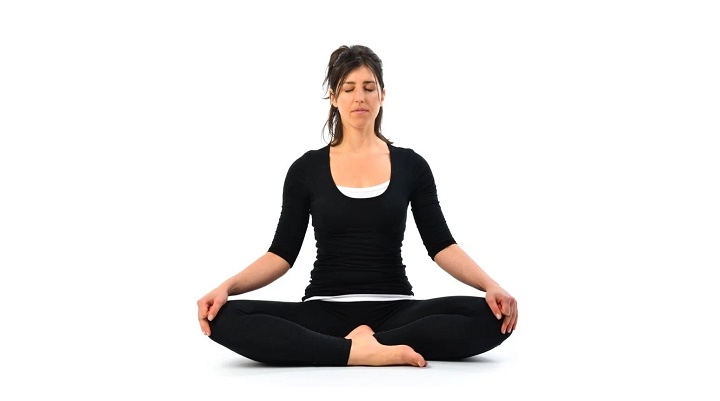
- Stretch your legs. Bend the left leg and place the sole near the thigh muscles of the right leg.
- Bend the right leg and place it in the space between the thigh muscles and the left calf. The soles of your feet are now between your thighs and calves.
Swastikasana is a very comfortable posture for meditation. Keep the hands also according to the instructions of Padmasana (Padmasana).
2. Gomukhasana or cow face
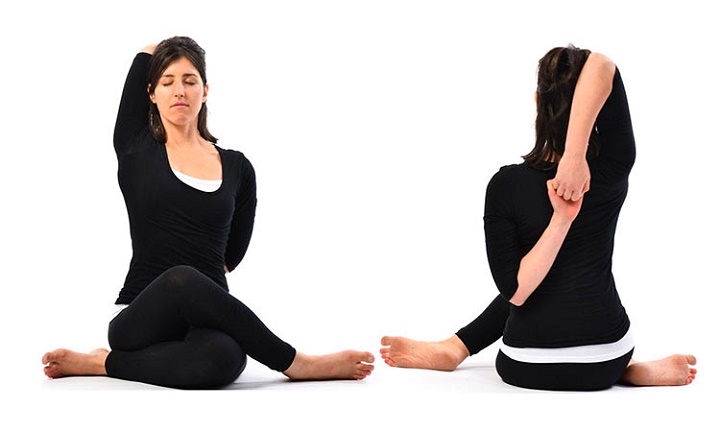
- Get on your hands and knees. Cross the right leg in front of the left leg and place both ankles outward and to the sides. Slowly move the arrows to the feet or ankles.
- Slowly lower your hips towards the floor or your heels with the support of your arms.
- Take the fingers of the left hand to the area between the shoulder bones, take the right hand behind the body, and hold the fingers of the left hand with the right hand. Slowly pull the arms towards each other. Stay in the same position or by exhaling; lower the forehead to the knees or the floor.
- Take a deep breath and stay in this position for 3 to 8 breaths.
- Release the arms and slowly raise the head and trunk by inhaling. Bring the hands forward and return to the table position.
- Do the same steps with the other side of the body.
3. Virasana or hero’s pose
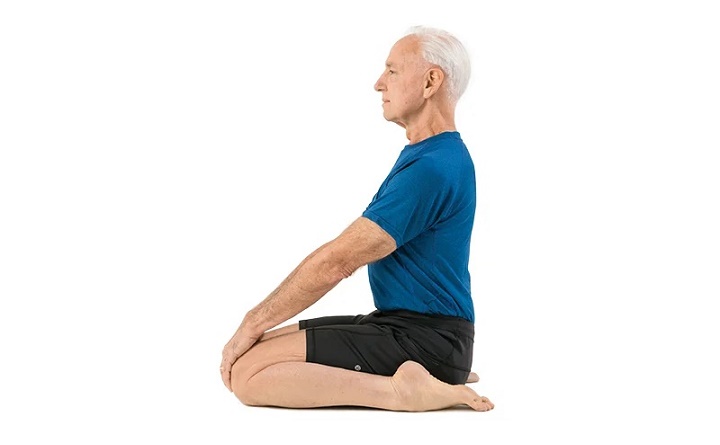
- Place the knees on the floor and couple. Spread your legs hip-width apart. Carefully sit on your heels so that your heels touch the outside of your hips. Put the hands on the knees; Palms should face up or down.
- The spine should be straight and stretched. Move the shoulders down and back and the chest forward.
- Relax the face, jaw, and stomach. Your tongue should be on the roof of your mouth and just behind the front teeth.
- Take a deep breath through your nose into your belly. Stay in this position as long as you can and are comfortable.
Champion posture is a comfortable sitting posture for meditation.
4. Matsyendrasana (Matsyendrasana) or sitting rotation position
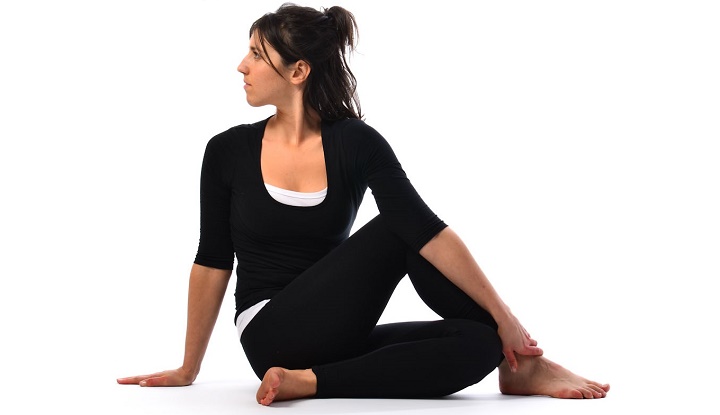
- In a seated position, extend the right leg straight in front of you, cross the left leg over the right leg, and place the sole of the left foot flat on the floor near the right knee.
- Pull the left knee towards the chest with the right hand. Stretch and straighten the spine.
- Inhaling, raise the left hand, exhale, bring it behind you, and place the palm on the floor, so the fingers face backward. Look over your left shoulder at the back wall. Place the right elbow on the inside of the left knee for a more profound twist.
- Relax and lower the shoulders and open the chest.
- Stay in this position for 4 to 7 breaths.
- By inhaling, raise the left hand, and by exhaling, untwist the body and face forward. Do the same steps with the other side of the body.
5. Forward bending movement in a sitting position (Paschimatanasana)
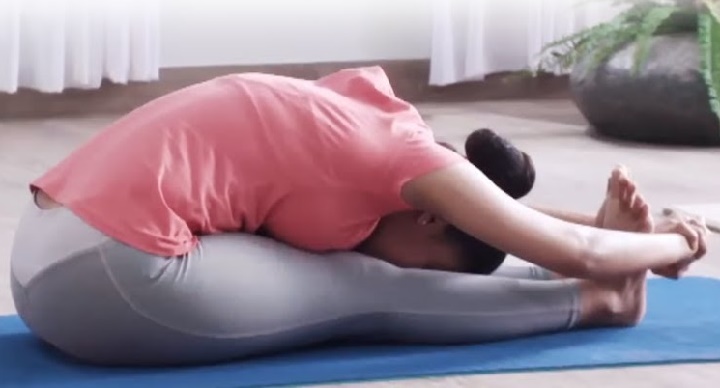
- Sit on the floor and stretch your legs in front of you. By doing the tail, lift the arms and over the head and try them.
- Exhaling, bend from the hips and slowly lower the trunk towards the feet. Reach the hands to the toes, feet, or ankles.
- Stay in this position for 3 to 8 breaths.
- Slowly return to a sitting position. While lifting the trunk by doing the tail, raise the arms above the head again.
6. Shavasana or corpse pose

- Lie on your back on the floor. Open your arms and legs. The components should be about 45 degrees away from the sides.
- Close your eyes and take deep breaths through your nose.
- Pay attention to all parts of the body, from the toes to the crown of the head, and pay attention to any tension, stiffness, and muscle contraction. Consciously release and relax any part that is experiencing tension and contraction.
- Release control over your breath, mind, and body. Let your body move forward in a state of complete relaxation.
- Stay in this position for 5 to 15 minutes.
7. Simhasana (Lion pose)
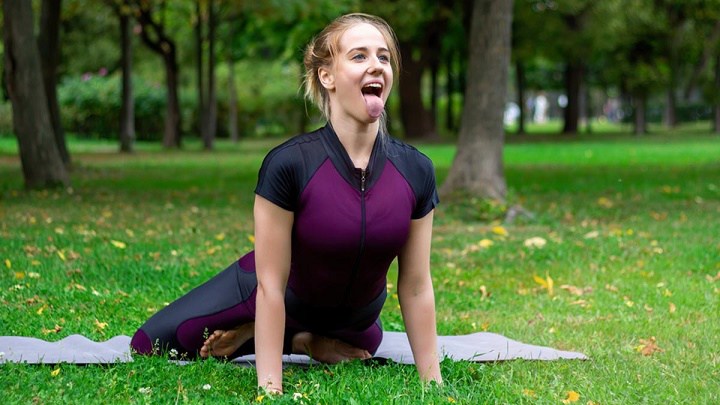
- Sit in a sitting position. Hips on heels and palms on knees. The spine should be long and straight.
- As you exhale, place your palms on the floor before your knees, arch your spine, look up at the third eye point, stick out your tongue, and roar like a lion. (Do it!)
- Return to the starting position by exhaling. Repeat this movement 2 to 5 times.
Frequently asked questions
1. Can hatha yoga build muscle?
Yes. According to research in 2016, only 21 days of Hatha yoga exercises can improve central muscle strength and balance.
2. Can hatha yoga reduce belly fat?
Hatha yoga also includes special dietary care, and this feature makes it one of the best activities for weight loss. With a 30-minute session, a person can burn 149 calories.
3. How often should I practice hatha yoga?
The best case is 2 to 5 sessions per week. Over time and gradually, your body will gain the ability to do 5 or 6 training sessions a week.
Warning! This article is only for educational purposes; to use it, it is necessary to consult a doctor or specialist.
